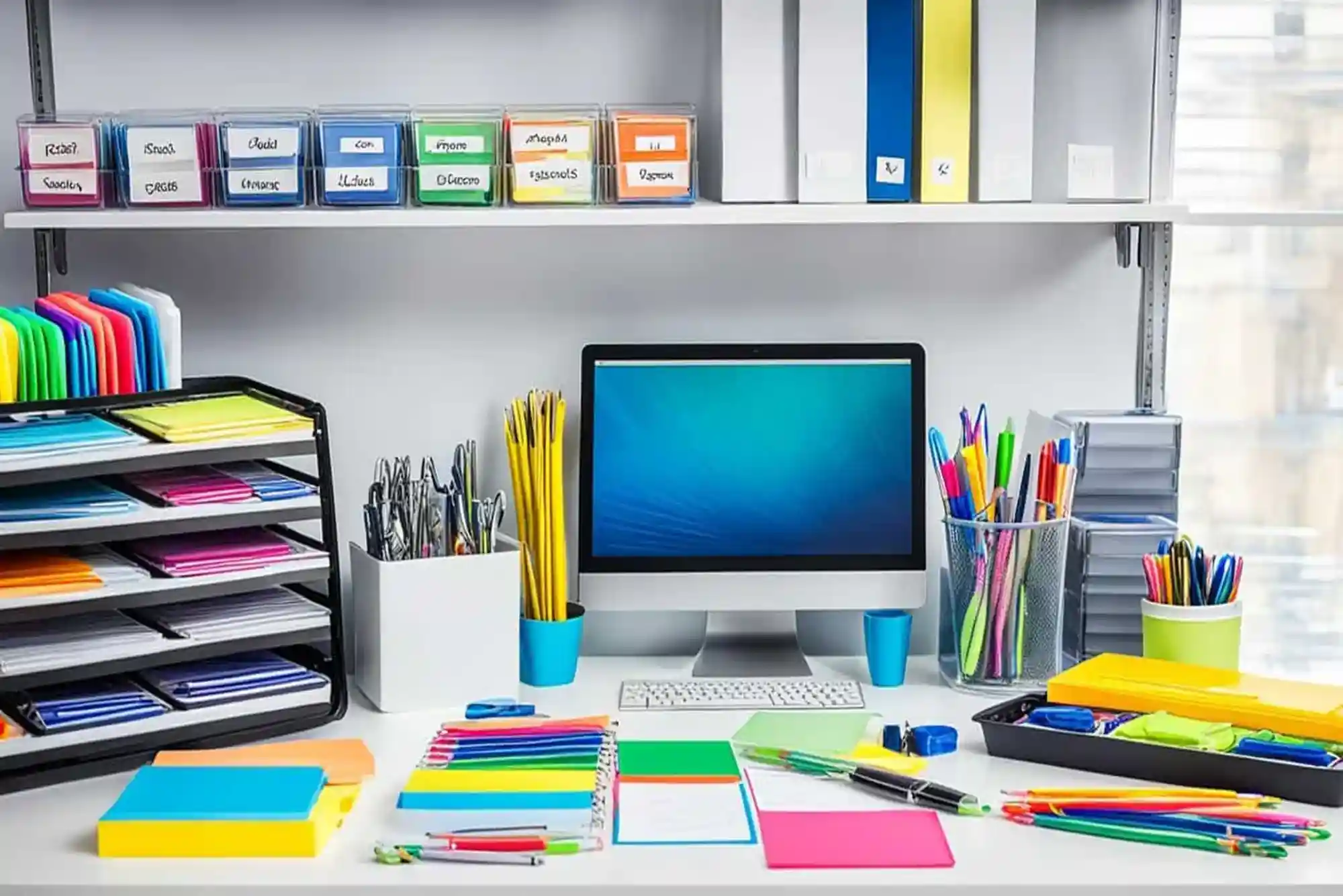If you’ve ever run out of pens in the middle of an important meeting or discovered there’s no printer paper left just as a deadline looms, you know how disruptive it can be when basic office supplies run out. While it may sound like a minor detail in the grand scheme of business operations, having a reliable system for restocking stationery and other essentials can actually make a huge difference in productivity, employee satisfaction, and even cost control.
Many managers and small business owners ask the same question: how often should I restock basic office supplies? The answer depends on your office size, the type of work you do, and how organized your supply management system is. But with a little strategy and consistency, you can avoid unnecessary shortages and keep your workplace running smoothly.
Why Restocking Office Supplies Matters
Think of office supplies as the fuel that keeps everyday tasks moving. Items like pens, notepads, sticky notes, highlighters, envelopes, and printer cartridges may not cost much individually, but collectively they represent an important foundation for productivity. When even one of these basics is missing at a critical moment, work slows down.
Beyond productivity, restocking is also about maintaining a sense of order. A well-organized workspace where employees know they can find the tools they need helps reduce stress. In my own experience working with small teams, I’ve seen how morale dips when something as small as a lack of staplers or sticky notes causes frustration. It may seem trivial, but the ripple effect is real.
How Often Should Restocking Happen?
There’s no universal timetable for all offices, but there are practical benchmarks you can follow. Small offices with fewer than 10 employees may only need to review their inventory every month. Larger offices, on the other hand, should consider weekly or biweekly checks. The frequency often comes down to how quickly certain supplies are consumed.
For example, printer paper tends to run out faster in environments with heavy document handling, while pens and markers might disappear at a slower rate but still need consistent replacement. An office that hosts frequent client meetings might go through more notepads, folders, or presentation materials. Tracking these patterns is the key to deciding on your restocking rhythm.
One strategy that works well is creating a stockpoint—a designated supply hub where all your stationary office supplies are stored. When employees know there’s a single location to pick up what they need, it becomes easier to track usage levels and spot when restocking is required. Instead of waiting until supplies run out, you can see the shelves thinning and place an order before shortages happen.
The Role of Stockpoint Systems
The concept of a stockpoint goes beyond just a storage cabinet. It’s about organizing supplies in a central, easy-to-access location that makes tracking simple. By designating someone—whether it’s an office manager, administrative assistant, or rotating employee—to monitor the stockpoint weekly, you gain real-time awareness of supply levels.
In one mid-sized firm I worked with, setting up a proper stockpoint reduced last-minute supply orders by nearly half. Employees stopped hoarding pens and notepads at their desks, because they trusted there would always be more available in the supply hub. This not only made usage more predictable but also cut down on waste.
The stockpoint method also makes budgeting easier. When you can clearly see how often supplies are being consumed, you’re able to predict costs over time and avoid over-ordering. For businesses aiming to control expenses, this kind of oversight can be surprisingly powerful.
Balancing Restocking with Cost Control
Of course, restocking too often can create unnecessary expenses. Over-ordering leads to clutter, and sometimes products even go unused. I’ve seen boxes of branded notebooks collecting dust because a company miscalculated their usage needs. The best approach is to strike a balance between keeping essential supplies available and avoiding excessive storage.
One way to do this is to categorize your supplies into fast-moving and slow-moving items. Printer ink, pens, and sticky notes might belong in the fast-moving category, while hole punchers and staplers are slower to wear out. By identifying which supplies need frequent replenishment, you can focus your restocking schedule more efficiently.
Another practical tip is to review supplier options. Many vendors offer subscription or scheduled delivery services for basic items like paper or toner. If your office uses predictable amounts, automated restocking can save time and reduce the risk of running out. But even with automation, it’s smart to keep an eye on actual consumption to make sure the supply matches your real needs.
Involving Employees in the Process
Restocking isn’t just the responsibility of management. Employees play an important role too. Encourage your team to report when certain supplies are running low, rather than waiting until they’re gone. Some offices even place a simple notepad or digital log at the stockpoint so employees can note what needs replenishing.
By involving staff in the process, you create a sense of shared responsibility. This approach also ensures that the supplies ordered actually match what people are using. After all, there’s no point in filling shelves with items that don’t fit your team’s workflow.
The Impact on Productivity
It’s easy to underestimate how much something as simple as timely restocking impacts productivity. I once worked with a small design team where deadlines were constantly tight. The moment they ran out of sketchpads or printer ink, the entire schedule was thrown off. After implementing a restocking system and designating a stockpoint, the team no longer wasted time scrambling for supplies, and project turnaround noticeably improved.
In larger offices, the effect can be even greater. If dozens of employees are all affected by missing supplies, the collective loss of time adds up quickly. Reliable restocking means fewer interruptions, smoother workflows, and happier employees who can focus on their actual work.
How to Create Your Own Restocking Schedule
If you’re not sure where to start, begin by taking an inventory of your current supplies. Note which items run out the fastest, and estimate how long each typically lasts. Use this data to create a simple restocking schedule, such as:
-
Printer paper: review weekly
-
Pens and markers: review every 2–3 weeks
-
Sticky notes, folders, envelopes: review monthly
-
Larger items (staplers, scissors, binders): review quarterly
This schedule can be adjusted over time as you get a clearer picture of your actual usage. Remember that the goal isn’t to be rigid, but to create a system that adapts to your office’s unique needs.
Final Thoughts
So, how often should you restock basic office supplies? The answer is: as often as your office demands, but not more than necessary. By paying attention to usage patterns, setting up a central stockpoint, and involving your employees in the process, you can strike the right balance between availability and cost control.





